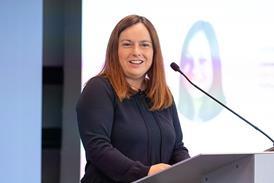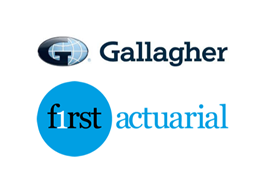On the go: Fears over the gender pensions gap, which is leaving women worse off financially in retirement than their male counterparts, have driven almost half (44 per cent) of working age women with a workplace or private pension to take action regarding their pensions, according to new research from Barnett Waddingham
Most commonly, women have increased monthly contributions into their pensions, with 14 per cent of those surveyed revealing that they have done so already. This is highest among women aged 18-34, at 19 per cent, and is higher among those working full-time (16 per cent) than part-time (14 per cent).
Some have taken steps to engage in conversations with both loved ones and professionals. Nine per cent of women have spoken to their partners about pension savings and the pensions gap, while 8 per cent have sought financial advice to increase retirement savings.
Furthermore, 20 per cent of women are planning to increase monthly contributions into their pensions, while 14 per cent plan to seek financial advice.
Only 9 per cent of women have supported recent campaigns that call on the government to change policies to support women’s pensions. This leaves 91 per cent of those surveyed who have not, indicating a lack of awareness or understanding of campaigns to improve women’s retirement wealth.
In response to these findings, Amanda Latham, policy and strategy lead at Barnett Waddingham, proposed five steps that policymakers should take to close the gender pensions gap.
She urged the government to review auto-enrolment rules in the context of gender, saying that the auto-enrolment minimum threshold impacts women more than men. She added that while there are proposals to remove the minimum earnings requirement, this should be done sooner rather than later.
Latham said minimum level contributions should be increased, as “people typically anchor to the default level of contribution when joining a pension plan, which is generally impacting women more than men”. State pension provision should be reviewed to better reflect career breaks and periods of being ineligible for auto-enrolment if the minimum level of contributions remained, she argued.
She also called for the provision of more education on how to assess the state pension, adding that the people most affected may be the ones less able to access this information.
Furthermore, she said switching to a flat rate of pensions tax relief would help women to save more, and suggested that moving to a tax relief rate of 30 per cent, for example, would “typically” increase a woman’s pension savings by 35 per cent.
Latham argued that evidence based on inequality of employment outcomes by sexual orientation is weak and inconsistent, and added: “In order to develop a system that works for everyone, data [on people identifying as trans or non-binary] needs to be collected and reported to understand progress and the impacts of policy changes.”
Finally, allowing couples to pay into each other’s pension plans would allow pension benefits to be shared more equally. Consideration should also be made to allow couples to transfer assets between each other’s pension plans, she said.
Commenting on the gender pensions gap, Latham said: “A proportion of women have acted already to either build their savings or seek support from professionals or loved ones, and even more are planning to take significant steps to close the gap themselves.
“While this is encouraging, it’s critical that the onus for change does not fall on individuals alone — the pensions system is intrinsically biased towards men, creating a stark disparity in wealth at retirement that needs to be addressed at its core.”
She added: “It’s therefore not enough to simply say that women need to contribute more to close the gap. Instead, we need to consider fiscal, behavioural and societal issues collectively, and work to create a more robust and inclusive pensions framework that offers fairer solutions for all.”






















